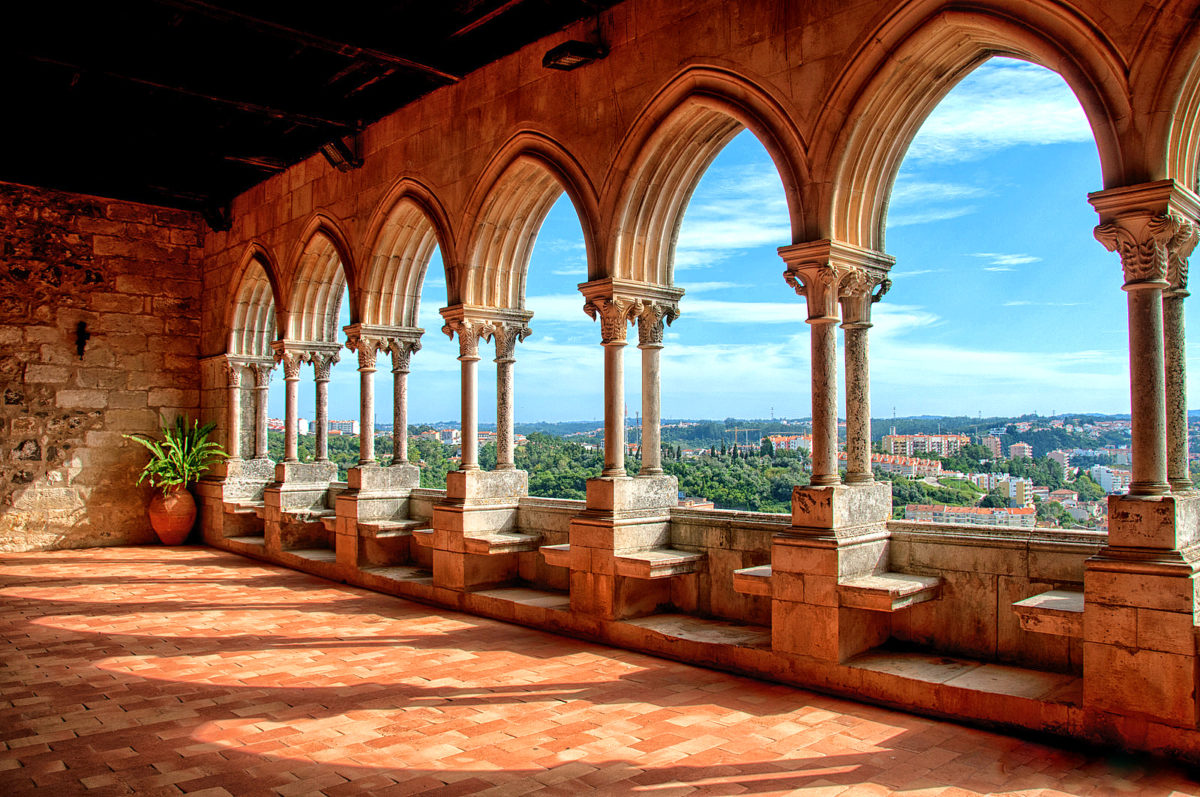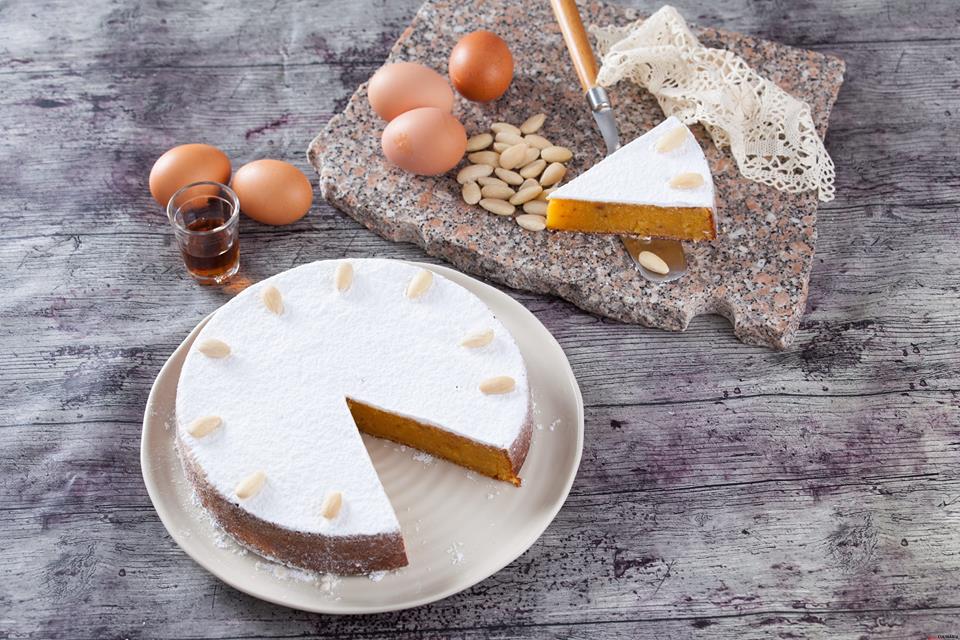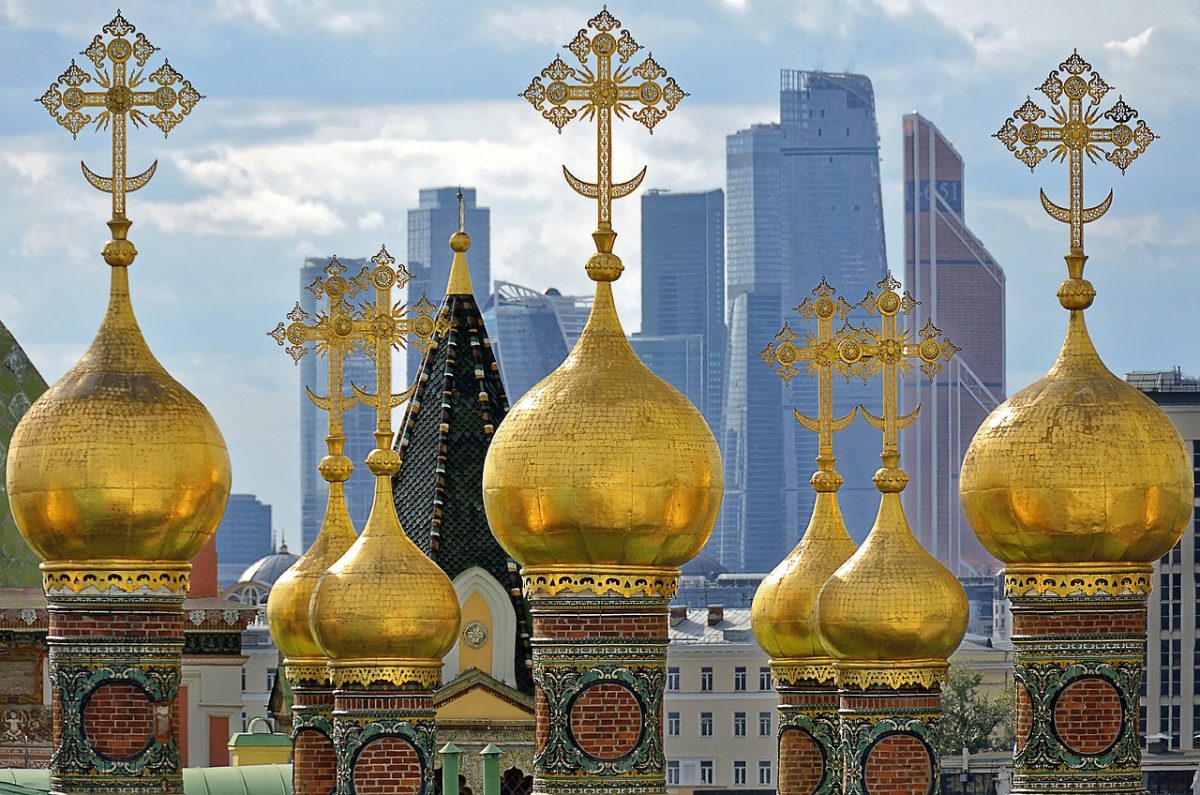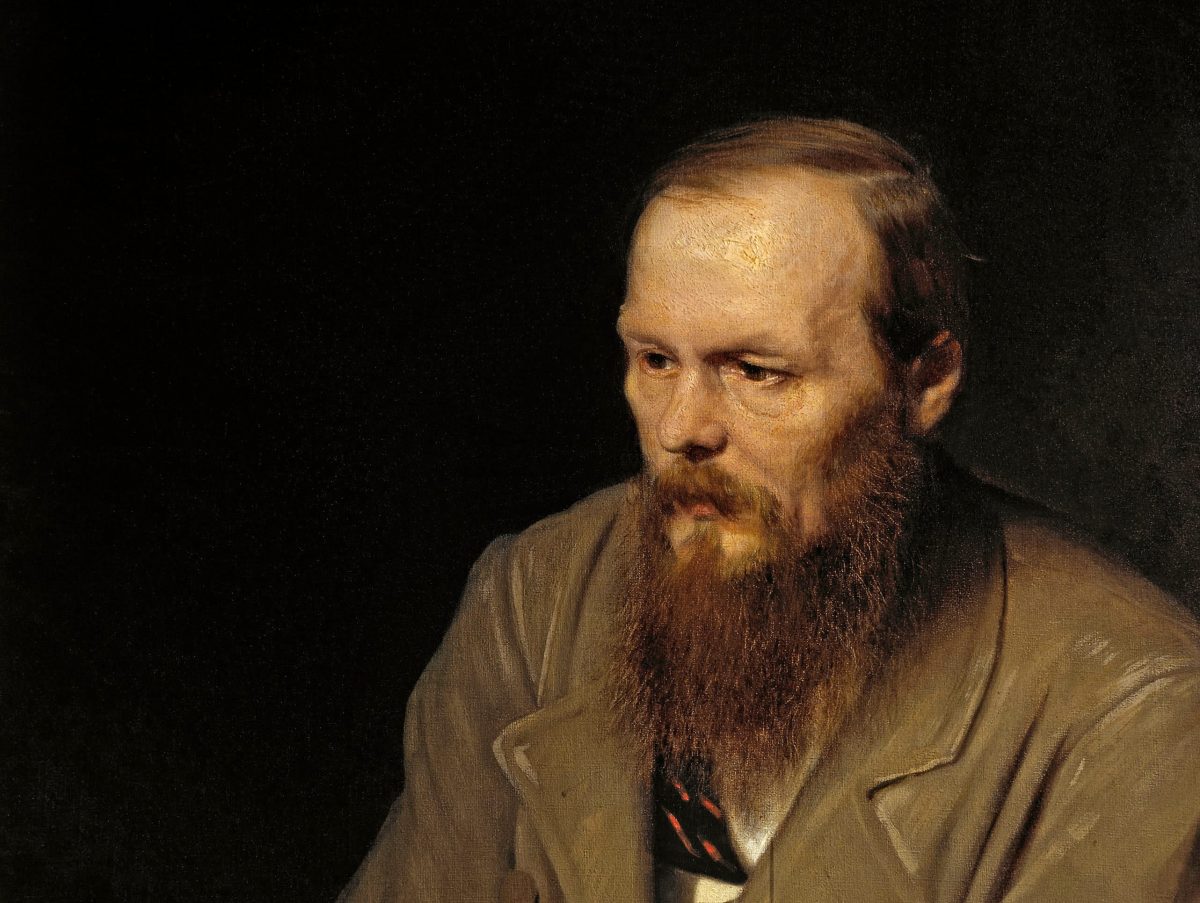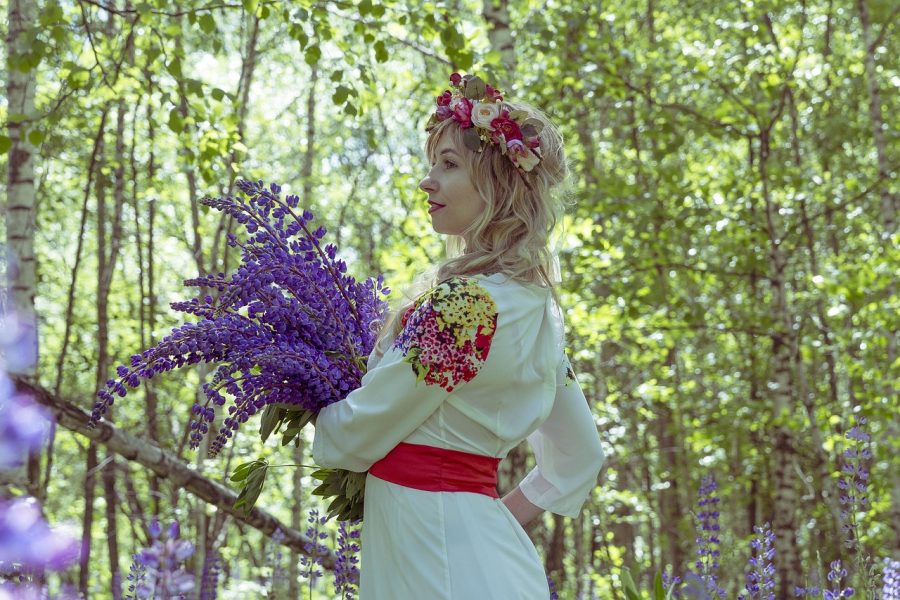Leiria has a river that flows uphill, a tower that does not have a cathedral, a cathedral that does not have a tower, and a High Street that is not straight. (According to a popular Portuguese rhyme.) For Dom Afonso Henriques, the first King conqueror of Leiria in 1135 and the founder of its castle, the town was the advance guard for his strategy of conquering Santarém, Sintra and Lisbon from the Moors, which took place in 1147. Currently, Leiria is a nice and quiet city, with many good restaurants, cafés and bars; and streets full of diverse shop. The old centre is the Praça Rodrigues Lobo square. Nearby it, you will find several hotels and restaurants.
Located in a wooded hill, just a short walk away, the Castle of Leiria is a must visit place. Behind the walls, you will find a quiet and dense garden, where Nossa Senhora da Pena Church, Gothic in style, stands; and to the side, the Royal Palace, which overlooks the city and has a many rooms worth exploring, especially the central gallery.
After leaving the castle, next to the square with the Metropolitan Police Headquarters, you will see the Romanesque Igreja de São Pedro Church (12th century). Walking down the streets, you will reach the Sé or Cathedral of Leiria, also a must visit place, and in front of it, the famous Pharmácia Leonardo Paiva, decorated with some interesting panels of tiles in which Hippocrates, Galen and Socrates appear. The novelist Eça de Queirós lived in the Travessa da Tipografia street, near the cathedral, and used to meet with a literary group in that chemist, which is now an Irish pub.
If you continue along Barão de Viamonte street, which starts in front of the Largo da Sé square, you will arrive to the Igreja da Misericórdia church (18th century) just three or four blocks away. Next to a pronounced meander of the river Lis, you will find the tourism office and, nearby, you can visit the Igreja do Espirito Santo church (17th century), with a Baroque facade; and a little further up, the Santo Agostinho Convent, with a church from the late 16th century, and the Nossa Senhora da Encarnação Sanctuary.
Upstream you can visit the São Francisco Convent (13th century), whose church preserves a Renaissance style chapel with an “Altar da Piedade” (Altar of piety). If you are cuisine savvy, you must visit Leiria during the Gastronomic Festival that takes place at the beginning of September. For nine days, the city is full of stands of traditional food, accompanied by folk dances. Discover what to see and do and the best places to see in Leiria, Portugal!
1. Castle of Leiria
The Castle of Leiria has an extraordinary and strategic location, in a place already inhabited in Roman times, where the first King of Portugal, Afonso Henriques, built in 1135 this castle to defend the Southern frontier of his kingdom (Santarém and Lisbon still were under Arab rule). After the reconquest of this two cities in 1147, the castle lost military importance and fell into ruin. In the 14th century, King Diniz rebuilt the castle to live in it with his wife, Queen Santa Isabel.
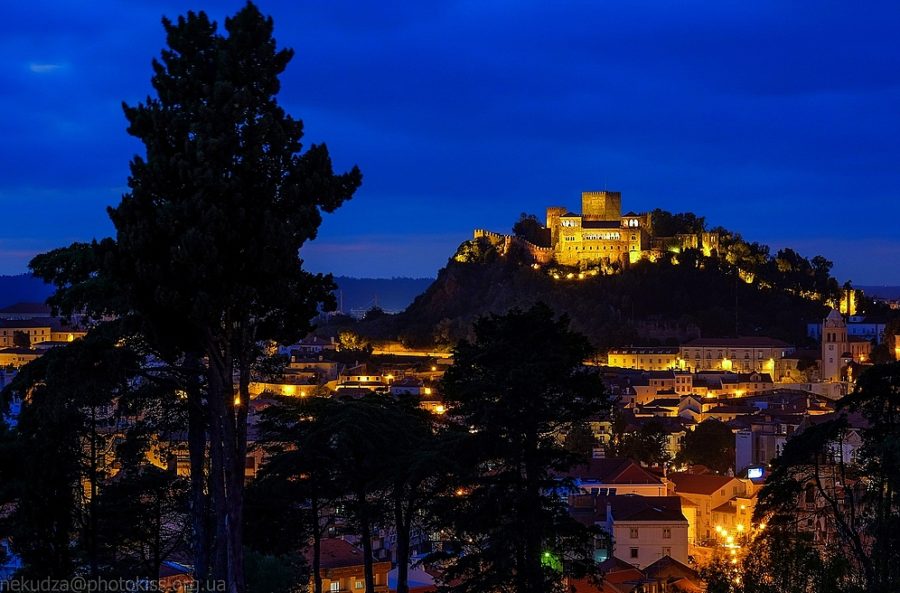
Now the castle is a monumental symbol of the history of the city. The architecture of the present buildings wa modified in the 16th century during a detailed restoration. In the interior, you shouldn’t miss visit the Torre de Menagem Keep Museum, where many archeological materials founded in the castle are exhibited, as well as replicas of medieval weapons. The Royal Palace has many rooms that are well worth visiting. Inside, the stairs lead to a central gallery, formerly a royal balcony, from which wonderful views of the city of Leiria can be contemplated, through eight Gothic arches resting on the same amount of pillars.
2. Cathedral of Leiria
The need for a Cathedral came about in 1545 when king João III came out in favour of raising Leiria to City status appointing the reforming Brother Brás de Barros, from the Monastery of Santa Cruz in Coimbra, as the first Bishop of the Diocese. Building began in 1546 under the guidance of architect Afonso Álvares. He took a Mannerist style for the exterior and creating a harmonious interior with its three balanced naves.
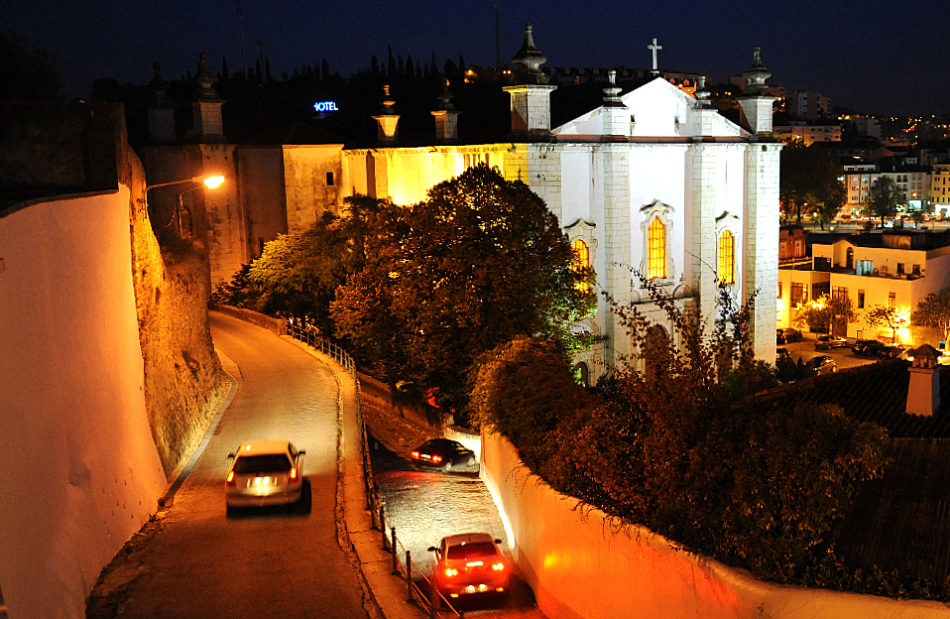
Certain changes were made down the centuries particularly those in the wake of the 1755 earthquake that provided a more sombre façade. Within, attention goes to the 17th century main chapel. Designed by Baltasar Álvares and Brother João Turriano in the Mannerist style, the altarpiece features paintings by Simão Rodrigues of episodes from the life of the Virgin Mary. There are also two large-scale organs in Baroque style. In the 18th century, during work on the façade, Brother Miguel Bolhões e Sousa ordered the building of the bell tower a short way from the main church and on the site of the former Portas do Sol medieval tower that guarded the Southern entranceway through the Castle walls.
3. Square Rodrigues Lobo
Right in the heart of Leiria, Praça Rodrigues Lobo is the city’s greeting card, a place of leisure and entertainment thanks to the many outdoor cafés available. The Portuguese pavement, the many cultural events and the view of Leiria’s Castle are some of the reasons that make this place so attractive. In medieval times, this was the Praça de S. Martinho (St. Martin’s Plaza), the place where the Igreja de S. Martinho (St. Martin’s Church) stood in 1211.
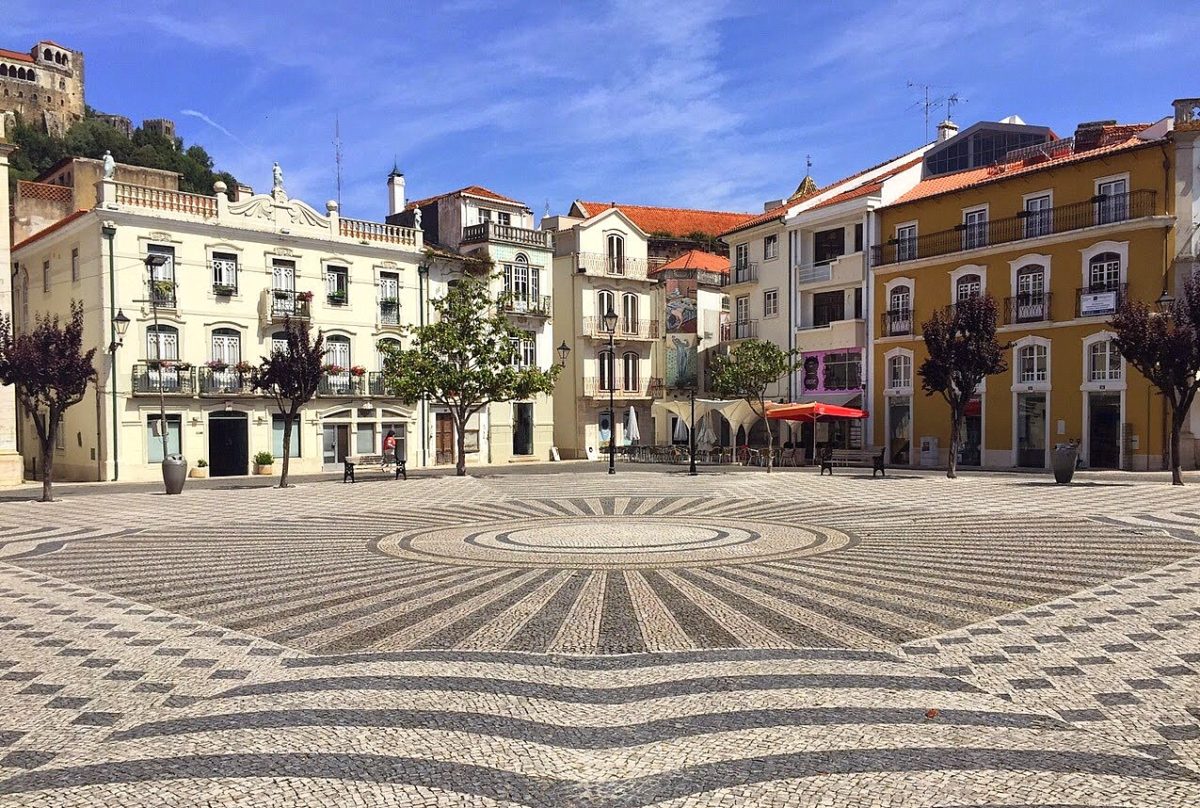
In front of this church, by the early 15th century, one could find the City Hall House, the Jail, the Pillory and the Notary Chamber. The current building of Ateneu de Leiria was the former 18th-century palace of the Oriol Pena family, whose coat of arms is still visible in the façade facing Rua Vasco da Gama. In the 19th century, it was in this building that the Assembleia Leiriense was located. Eça de Queirós was one of the members and he used to read his newspapers there. In his novel “The Sin of Father Amaro”, it was in this plaza that all the city’s important people used to meet. The bank Raposo de Magalhães, where José Maria Gomes worked, also known as Tomé, a friend of Miguel Torga was also located in this plaza.
4. Sanctuary of Nossa Senhora da Encarnação
The Nossa Senhora da Encarnação Sanctuary is located on the mount of San Gabriel, in the eastern part of the city of Leiria, Portugal. It is a pilgrimage-destination church which was built in the 16th century atop the old hermitage of San Gabriel. The grand staircase that precedes it was built in the 18th century by order of Bishop D. Fray Miguel de Bolhões. Even today, his heraldry can be seen there.
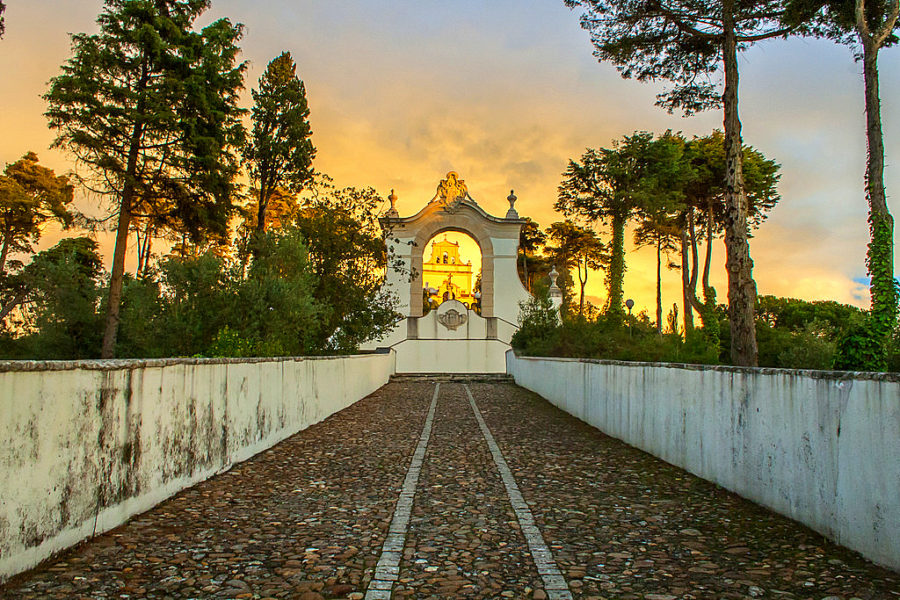
Next to the entrance, there is a gallery framed by seven arches. The central arch is the highest and is overlapped by a worked pediment where a statue of the archangel San Gabriel stands. Inside, there is a high altar with a statue of the patron virgin of the city, Nossa Senhora da Encarnação. The church is paneled with 17th century coloured tiles overlapping with paintings related to the patron’s life.
5. Sanctuary of Miracles
Under the guidance of mason masters José and Joaquim da Silva from Juncal, the people started building this church with alms money. Drawing inspiration from erudite baroque, the two masters began building this church in 1732. By 1750, the building’s interior was done and on the outside only the towers and the galilee railing were missing.
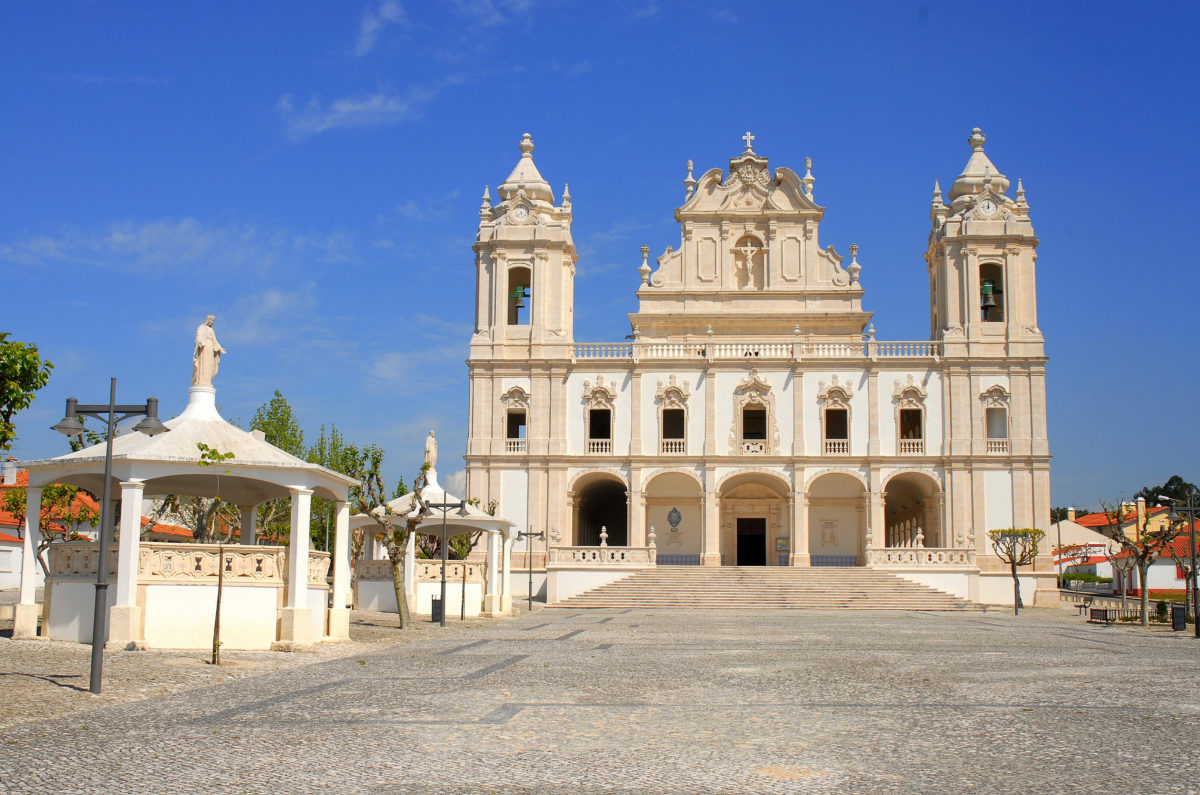
These would only be finished in the late 19th century thanks to architect Ernesto Korrodi. For many years, pilgrims would come to this place by the thousands, making this shrine a well-sought pilgrimage site. Today, the feast of Our Lord of Miracles takes place in the second weekend of September. Its procession with saint stands is very famous and attracts thousands of visitors from all over Portugal.
6. House of Painters
The House of Painters, named after the large number of artists who portrayed its façade, is a piece of historical architecture relevant to the whole of the historic center of Leiria, presenting a unique typology in the medieval urban fabric, a wooden balustrade, with two houses, on a small block top.
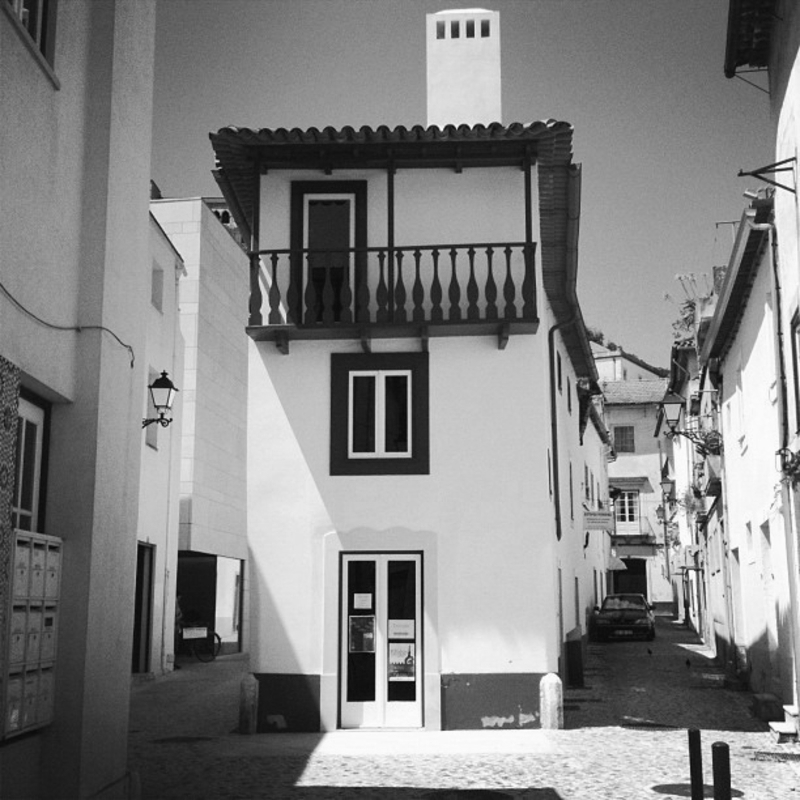
The restoration of this municipal building was intended to give it a function that would be compatible with the historic value of the site and, on the other hand, to boost the touristic dynamic by helping to create a network of museums and cultural centers that would dignify the cultural and touristic quality of the historical area of the city.
7. Historic Center
We challenge you to wander around Leiria’s old city. This beautiful area has been brought back to life with new shops and new cultural offers, such as festivals and literary events. Through streets and alleyways, you can retrace the steps of Father Amaro and Amélia, the main characters in the famous novel by Eça de Queirós, or lose yourself while taking in the rich architectural elements of this area.
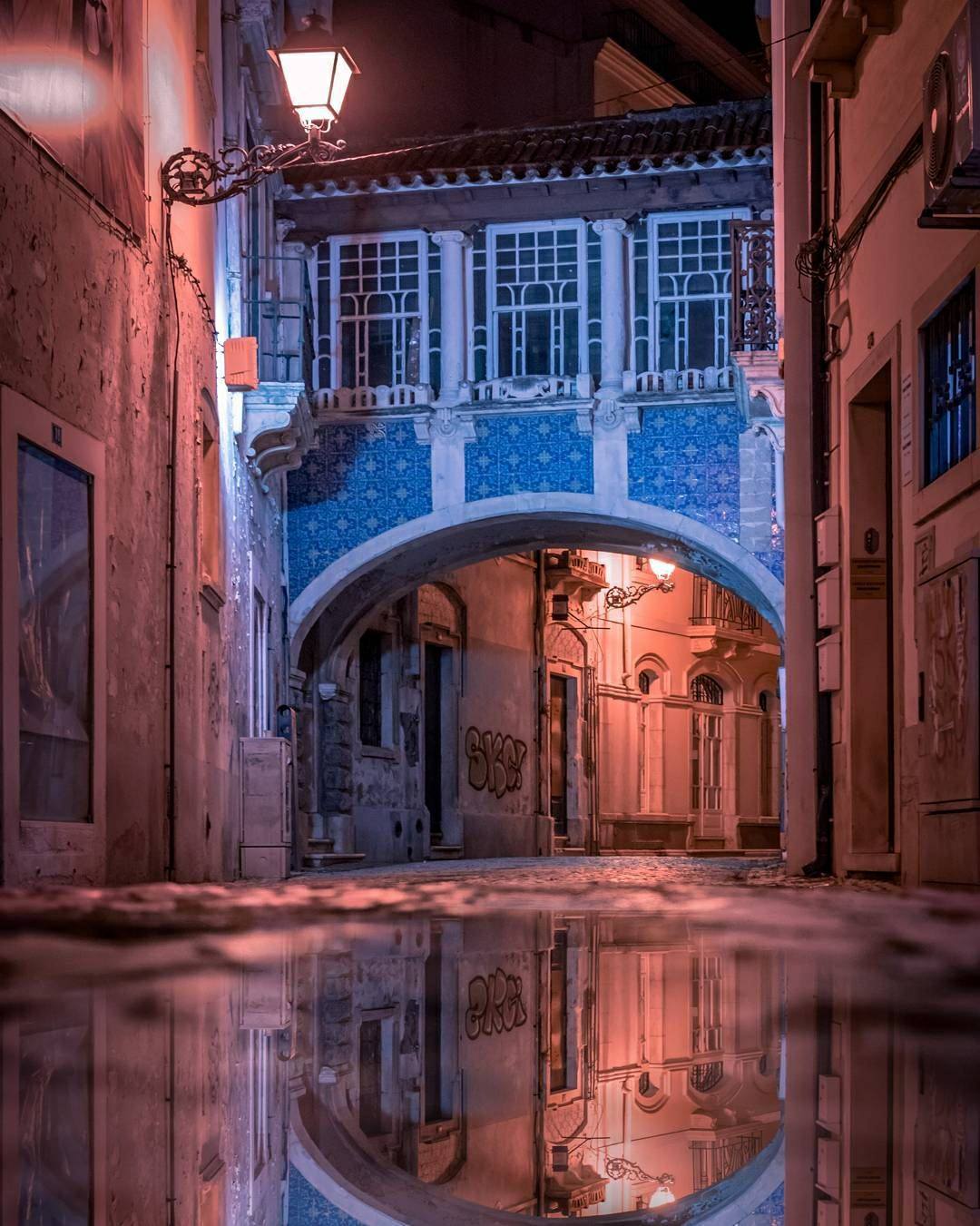
From Praça Rodrigues Lobo all the way up to the castle, there are endless possible routes. Largo Cândido dos Reis (formerly known as Terreiro), Fonte do Freire or the unmistakable Rua Barão de Viamonte (Rua Direita), Rua de D. Afonso De Albuquerque and Largo Paio Guterres (‘Gato Preto’) are some recommended points of interest.
8. Ervedeira lagoon
This lagoon is located in the parish council of Coimbrão, in the northern part of Leiria Municipality. Established in 1167, the Ervedeira lagoon is the only lake beach in this region. Over 600 meters (0.3 miles) wide, it is the perfect place for walks and to get in touch with nature. Although it doesn’t appear as a summer destination, it has two popular areas that are used as beaches. It is only a few kilometres from Pedrógão beach and it is a uniquely peaceful place.
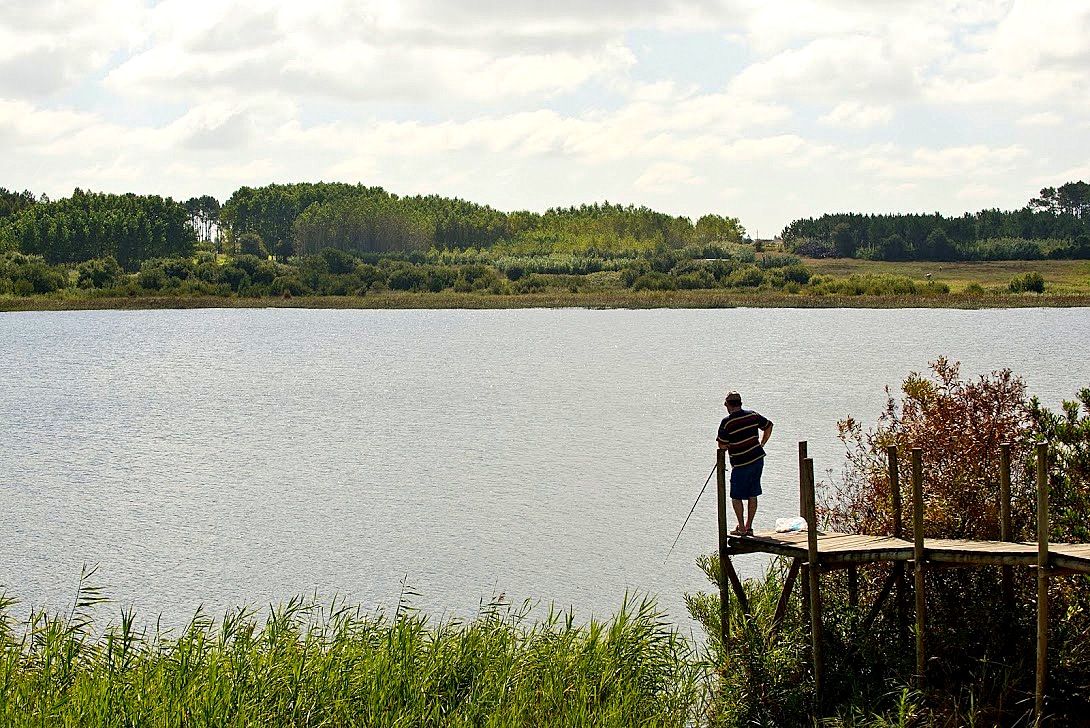
It features a freshwater lagoon surrounded by pine and eucalyptus trees, rosemary bushes and faya trees. Reeds also provide shelter for many species of fish, amphibians, reptiles, mammals and birds that choose this place to live and breed. The traditional way of fishing with baskets and other utensils, like narsas and enchalavadas, is long lost, but sport fishing and kayaking keep the lagoon alive and full of energy. The Ervedeira lagoon has a picnic area, a wooden walkway around the west bank side (a great place for birdwatching) and is a lovely beach resort. It is close to Coimbrão, Pedrógão beach, Vieira de Leiria and Vieira beach.
9. Monte Real
Known for its hot springs, Monte Real is a charming town where nature meets heritage. When visiting Monte Real, be sure not to miss the ruins of the royal palace, said to have been ordered by Queen Saint Elizabeth of Portugal, where you can enjoy a lovely view over the Lis valley.
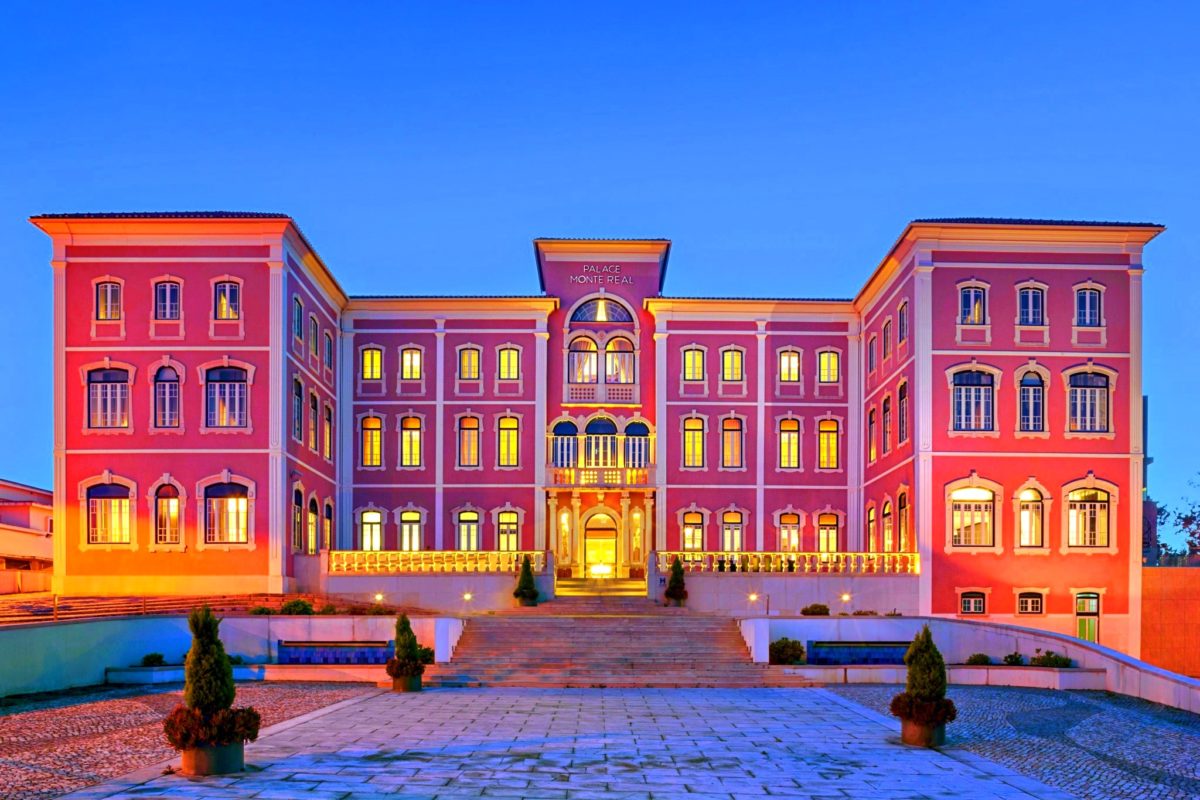
In the older part of town, there is a pillory from 1573 next to the City Hall House, which was burnt down during the French invasion and was also used as a jail. Another place worth visiting is the small spring known as Fonte da Rainha Santa (Queen Saint Spring), where it is said Queen Saint Elizabeth used to stop for a drink of water. Tradition has it as miraculous and it is very sought after by mothers who don’t have enough milk to breastfeed their babies. But the town’s main attraction is its hot spring waters, which are crucial for the local economy.
10. Pedrógão Beach
Like an island between the green sea of Leiria’s pinewoods and the Atlantic Ocean, Pedrógão beach offers a wide sandy shore, the benefits of iodine, Xávega artistry, and peace. The Estrada Atlântica (Atlantic Road) and its long bike path, and its proximity to the Ervedeira lagoon, are two more attractions of a seaside resort that was awarded three quality prizes: the European Blue Flag, the Accessible Beach Flag (from the Instituto Nacional da Reabilittação) and the “Gold Quality” flag (from Quercus).
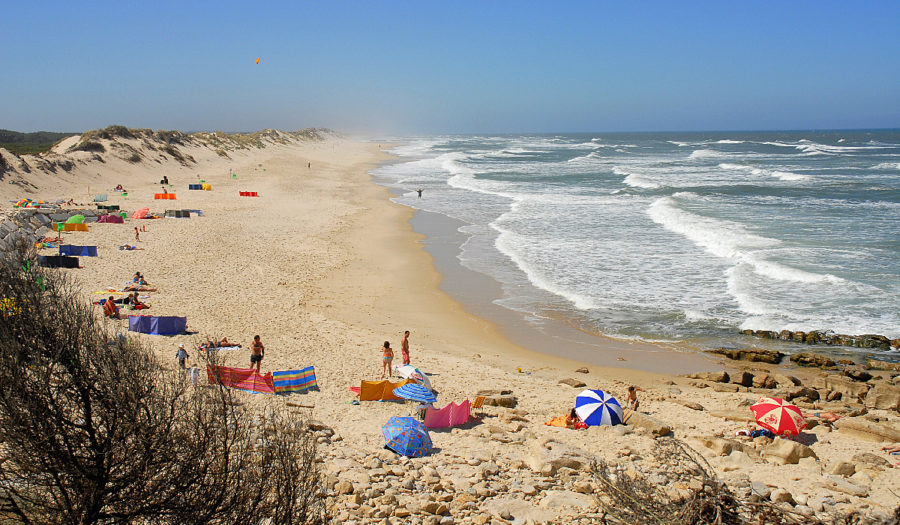
The camping site is in the southern part of Pedrógão, where the southern entrance to the village meets the road that crosses the woods towards Figueira da Foz. It has good roads that allow you to get to Pedrógão, the beach and other places: southwards, Vieira de Leiria; and northwards, Osso da Baleia. The services building has a restaurant, a bar, a game room and a terrace, as well as a mini-market and a fishmonger. The camping site also offers a field where visitors can play handball, indoor soccer, basketball, volleyball and tennis, as well as a playground for children.
11. Museum of Leiria
Leiria Museum is an open window facing the memory of a land inhabited for a long time that, at the beginning of the 21st century, reveals a new look at a complex reality. This institution has received several awards, such as Best Museography Work in the Portuguese National Museology Awards in 2016, an honourable mention in the Best Museum category and an honourable mention in the Physical Accessibility category from Acesso Cultura association. The creation of the museum was made possible thanks to Tito Larcher’s (1865-1932) efforts that culminated in the Decree of November 15th, 1917 that created the Museu Regional de Obras de Arte, Arqueologia e Numismática de Leiria.
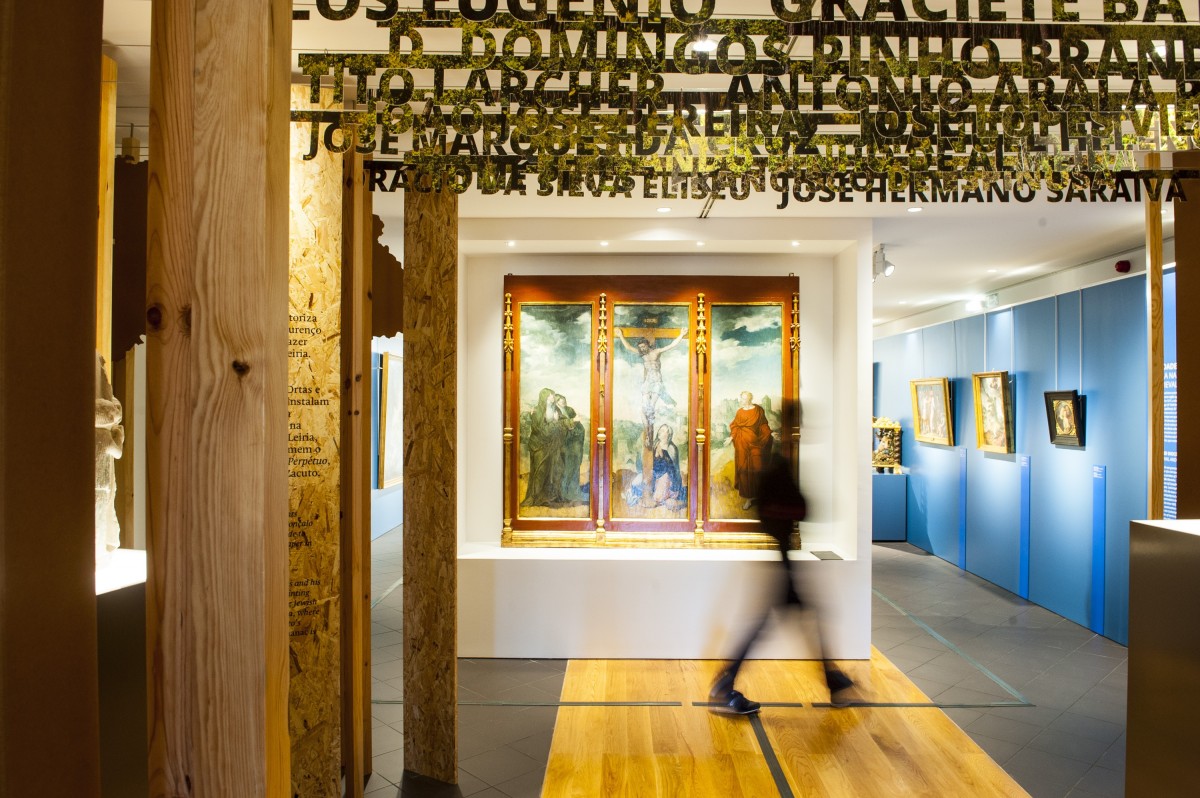
The year of 2006 marked the beginning of the ongoing process which gave Santo Agostinho’s Convent (the church was built in 1577 and the convent in 1579) back to the city, now as the site for the new Leiria Museum. The diverse museum program showcases not only the previous museum collection, but also municipal art collections and the archaeological reserve. It is the core of the municipal museums, open to the city and its region. Leiria Museum is divided into two separate exhibition rooms. The first one houses a permanent exhibition, presenting a summary of the territory’s history, portrayed through a vast number of objects, events and myths, that define the core identity of the country. The second exhibition room presents temporary exhibitions, thus promoting a better understanding of specific themes and collections.
12. Center for Intercultural Dialogue
The center was created with a cultural, ecumenical, and economic purpose and its main goal is to interpret the presence of three important religions present in Leiria throughout the centuries. This space showcases the value of the coexistence of Christianity, Judaism, and Islamism. These religions were and still are a sign of the region’s development and multicultural character, all thanks to the acceptance and cultural and economic contribution of various migrant communities. The Igreja da Misericordia was built in 1544 on top of Leiria’s Judaic community’s synagogue. This was one of the 12 main projects, of the 25 that form part of the Rotas Sefarad project.
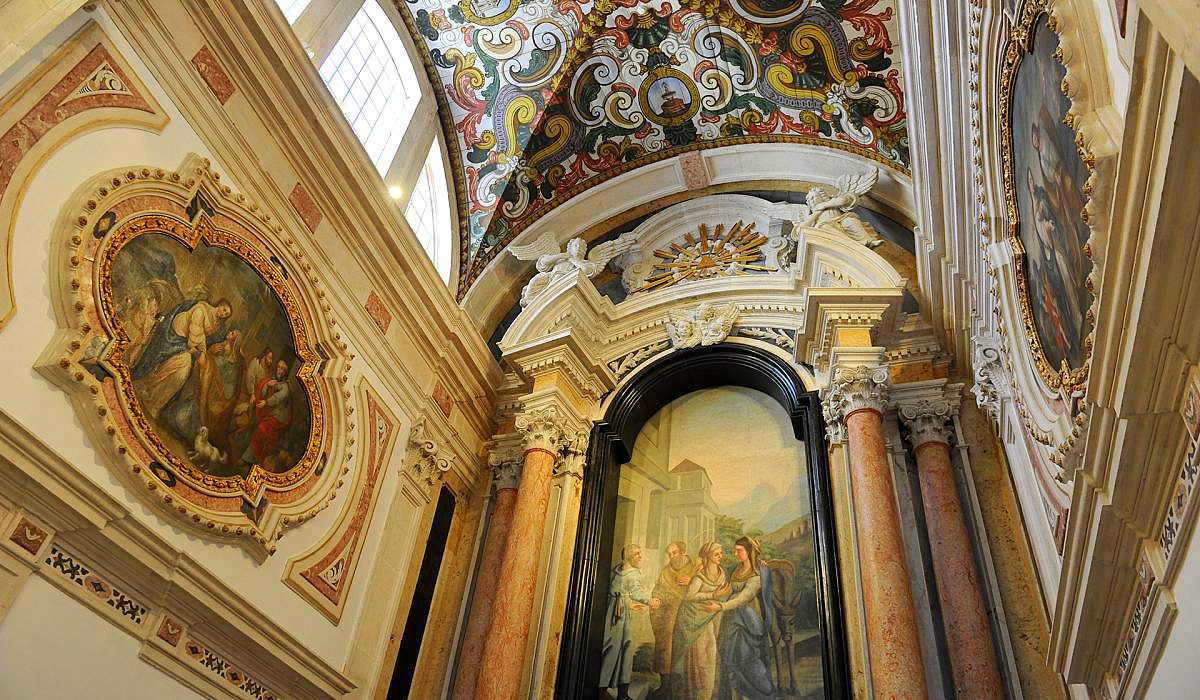
This project is considered essential for the success of the Portuguese Network of Jewish Quarters (Rede de Judiarias). The Rede de Judiarias de Portugal proposed that the Rotas Sefarad project integrated EEA Grants. This program is characterized by a Norway’s, Iceland’s, and Lichtenstein’s avid participation. This project also includes Leiria’s multicultural memories, such as, Francisco Rodrigues Lobo, the new Christian poet, and father Joaquim Correia, who saved dozens of people of Jewish origin, during the 2nd World War.
